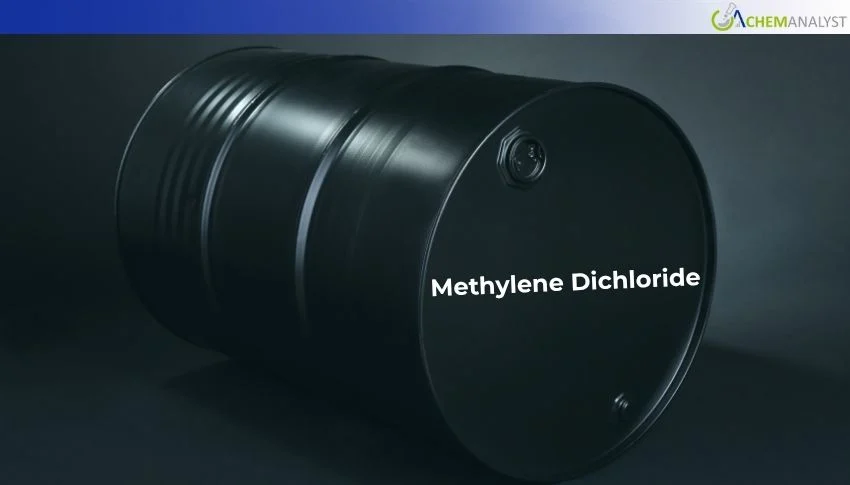Welcome To ChemAnalyst

In China, prices of methylene dichloride were up 6.5% for the week ended Nov. 7, driven by contraction of supply from plant maintenance, but weak downstream demand capped gains, as prices fell back 1.2% by Nov. 14, due to prevailing inventory and cautious buying.
During November 2025, China’s methylene dichloride or dichloromethane market saw increased volatility. While prices rose 6.5% for the week ended November 7, they retreated 1.2% in the ensuing week. The fluctuations reflected a tug of war between supply-side constraints and persistently weak demand.
October had already set the stage for this pattern. The market saw a “low-level rebound” last month, largely because of tightening supply conditions. Maintenance shutdowns at some major plants—including a 240,000 ton/year plant in Shandong and a 160,000 ton/year unit in East China—eased oversupply pressures and triggered two price rebounds for methylene dichloride. However, demand remained weak, preventing a sustained rally.
In November, supply contraction continued to capture headlines for methylene dichloride. A 380,000-ton/year unit in Shandong began rotating maintenance on November 2, and a 240,000-ton/year plant in East China planned to enter maintenance in mid-month. Those shutdowns temporarily reduced availability to support the sharp 6.5% price increase in the first week of November. Meanwhile, the operating rate of the domestic methane chloride industry declined to about 65%, and inventories of many companies were at low levels, which provided a solid fundamental basis for price support.
Yet, demand dynamics told a different story for methylene dichloride. Downstream users kept a "just in time" purchasing model, sourcing only to meet immediate needs. The refrigerants provided stable demand, while the pharmaceutical and adhesive sectors continued to move toward substitutes under environmental policy pressure. High inventories among the downstream industries further restrained their willingness to buy at higher prices. Consequently, even while the supplies were tightening up, the market did not have the required demand strength to hold the uptrend momentum for methylene dichloride.
Feedstock trends were also a factor: methanol prices rose early in the quarter but later dropped as port inventories remained high and demand were weak, undermining cost support for methylene dichloride. Prices of liquid chlorine, on the other hand, rose on reduced supply and stronger demand, providing mild bottom support.
Exports offered some respite for methylene dichloride. Shipments in September jumped 39.75% from a month earlier, offsetting overcapacity in the domestic market. Market participants now view export performance as increasingly critical to balancing supply and demand.
By the week ending November 14, a discrepancy between tightly supplied and sluggish demand began to appear. Traders and downstream factories were quite indifferent to the higher price, with transactions driven mostly by rigid demand. Methylene dichloride prices thus fell 1.2% in a reflection of how weak the rebound foundation was.
Going forward, the methylene dichloride market is likely to continue to see-saw between supply-side contraction and weak demand. Plant maintenance schedules, timelines for restart, and export momentum will be closely watched in the weeks ahead to determine if methylene dichloride prices can find a firmer footing.
We use cookies to deliver the best possible experience on our website. To learn more, visit our Privacy Policy. By continuing to use this site or by closing this box, you consent to our use of cookies. More info.
